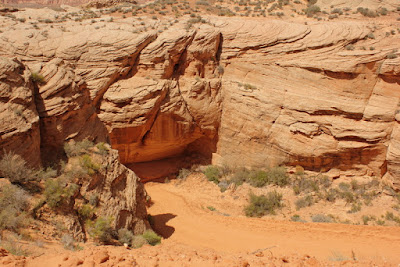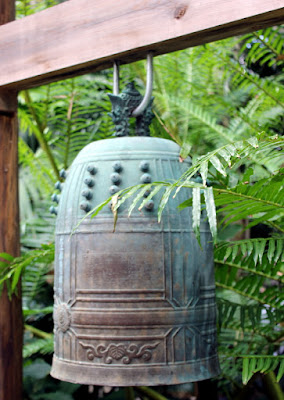In addition to the striking scenery, good food, and precious
hours spent with a friend, one of the best things about my recent trip was the complete
break in routine. Routines can become ruts, where life sort of runs on
automatic pilot and I don’t think about what I’m doing. After coming home, I
have the choice of picking up my previous routines… or not. That’s one of the
things I’m still figuring out, two weeks into my return. I feel like I need to
change up how I operate.
But I digress.
Before I continue with the travelogue, I have to share with you the Best.
Breakfast. Ever. We ate at Crema in
Cottonwood, Arizona both mornings we were in town. If you’re in the area, do
not miss it. (No affiliation.)
 |
| Crepes with fresh berries and marscapone cheese |
 |
| Egg sandwich with arugula and sriracha aioli |
After fueling up at Crema, we waddled to our car where we took off for further exploration, including:
The cliff dwellings at Montezuma Castle were home to the
Southern Sinagua, and were occupied until the 1400s. Montezuma Castle is one of
the best-preserved historic structures of the Southwest. It rises 100 feet
above the valley, and consists of five stories and 20 rooms. Early American
settlers assumed it was Aztec in origin, so they named it after Montezuma. We
walked an easy paved loop trail past the cliff dwellings, down to the river,
and back to the visitor’s center.
After the Castle, we stopped by Montezuma Well right at the
end of the day, and what a lovely spot it turned out to be! The Well is fed by
springs, and more than 1.5 million gallons of water flow into it every day. The water eventually flows into an
irrigation ditch, which has sections that date back over 1,000 years. The
Southern Sinagua used water from this well to irrigate crops, and the residents
of Rimrock, Arizona currently use it for gardens and livestock. There’s a
pretty stiff climb up a hill that leads you to this:
We also climbed down to the water level of the well, and
followed a trail along where the water flows out of it.
In a previous post, I promised striking rock formations, and
here they are:
Bell Rock and Courthouse Butte, near Sedona, Arizona. We
stopped here briefly before sunset, dinner, and heading back to our hotel for
the night.
The last place I’ll take you on this road trip is also one
of my favorites: Horseshoe Bend. Horseshoe Bend is near the Grand Canyon, but not technically
part of it. You can take an aerial or land tour, but you can also park and walk
to the rim for free. Once there, look down 1,000 feet to the Colorado River as
it winds around a 270-degree, horseshoe-shaped bend. This is known as an entrenched
meander. Isn’t that a wonderful name?
We visited Horseshoe Bend twice, hoping for some good sunset
photos, but it was too hazy each time. That didn’t matter—with or without
sunset, Horseshoe Bend is photogenic, and the people watching was also
entertaining. Stressed-out parents trying to keep their kids safe but still
allow them to see and photograph the scene, couples cautiously creeping to the
edge of the canyon to take selfies (or foolhardily marching up to the edge),
Kerri trying for the perfect shot without losing her camera and tripod into the
abyss. Once I snapped my photos, I sat and soaked up the scene while she
experimented with settings and tripod placement, letting my eyes wander over
the landscape, feeling the slight breeze on my face.
 |
| Scenery around Horseshoe Bend |
 |
| Yes, we were this close to the edge |
What is your next adventure?




























































.jpg)


